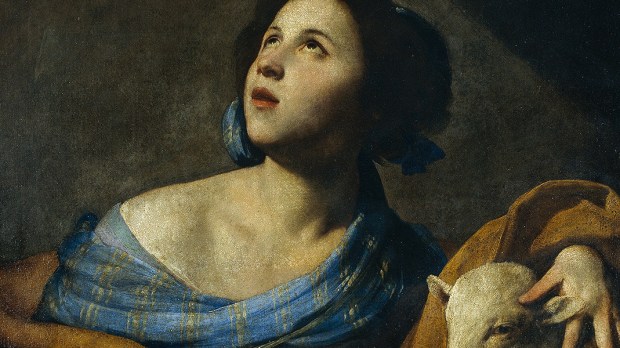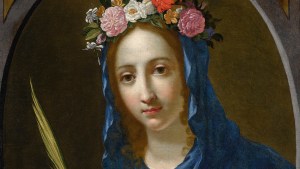St. Agnes of Rome, whose feast is on January 21, is frequently depicted in religious art with a lamb.
Not only that, each year lambs are blessed on her feast day and their wool used to make a pallium, a white scarf-like vestment that is worn over the chasuble of a metropolitan bishop.
First of all, the primary connection between St. Agnes of Rome and lambs is her name, “Agnes.” The Latin word for lamb is agnus, and as a result, her name means, “lamb.”
Furthermore, there is a medieval story from the Golden Legend that reinforces this connection, recalling an event that happened after her death.
It happed that when the friends of Saint Agnes watched at her sepulchre on a night, they saw a great multitude of virgins clad in vestments of gold and silver, and a great light shone before them, and on the right side was a lamb more white than snow, and saw also Saint Agnes among the virgins which said to her parents: “Take heed and see that ye bewail me no more as dead, but be ye joyful with me, for with all these virgins Jesus Christ hath given me most brightest habitation and dwelling, and am with him joined in heaven whom in earth I loved with I my thought.”
In this story the presence of a lamb symbolized purity, and refers to the purity of her life.
Ever since, St. Agnes has almost always been depicted with a lamb, and lambs continue to be blessed on her feast day.



